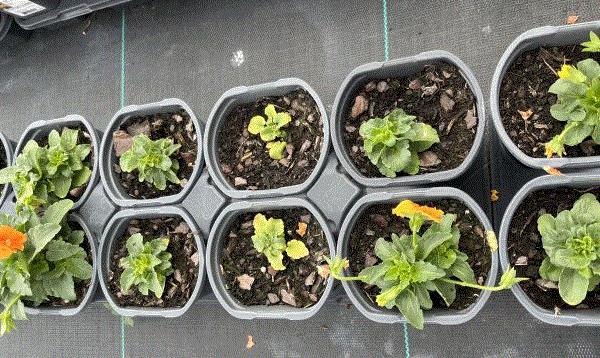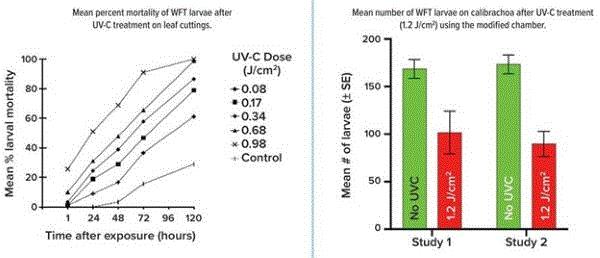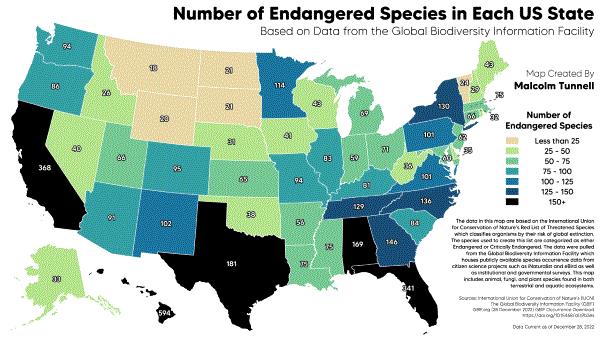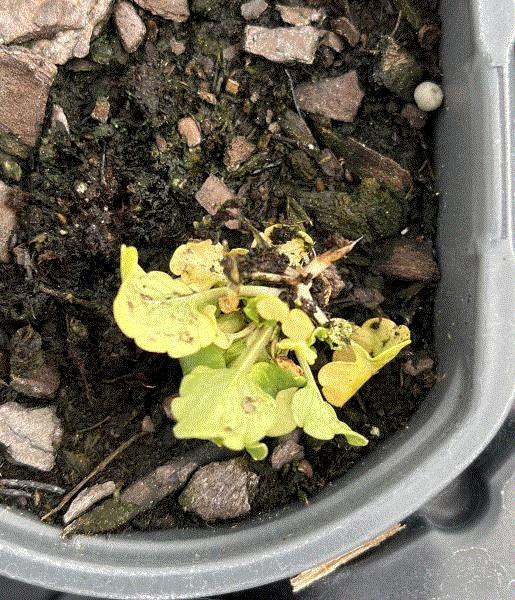What the ... ?
Last week, I visited several greenhouses and nurseries in Texas with a Harrell’s team consisting of Solomon Aydani, Glenn Fain and Aaron Palmateer. I was scheduled to give an educational presentation to the folks at Creekside Nursery, but then I thought that since I’d gone out to Texas, it’s kind of silly to give a one-hour talk then leave the next day. I might as well stay around and visit a few folks. So I did! The intrepid Harrell’s trio was nice enough to let me tag along.
I’m glad I made it a longer trip. I was fortunate enough to visit at a great time to catch the vibrancies and promises in every crop at several facilities. Garden mums were ready to ship or almost done shipping out. Bracts of some early poinsettia varieties are turning colors. Pansies and other fall crops are in various stages of growing and finishing. Blocks and blocks of woodies are ready for sale this year and the next.
We also come across some less-than-desired crops. With Aaron being a pathologist and me being an entomologist, we can’t help but notice and get excited when we come across bugs and diseases.
Let’s do one on pansies today. Here are some chlorotic pansies from one operation (not Creekside Nursery). What in the world is going on?


Post-Hurricane Support
Mother Nature hasn't been particularly kind to our industry this year. Some Texas operations I’d visited are still rebuilding their prop houses, shadehouses and growing areas damaged by Hurricane Beryl. Our peers in several southern states—particularly Florida, Georgia, the Carolinas and Virginia—haven’t recovered from the back-to-back shock and damage left by Helene and Milton.
Our own Chris Beytes reported on the devastation of tornadoes spawned by Milton to Brad’s Bedding in Fort Pierce, Florida, in last week’s Acres Online. The nursery’s crop losses may be as high as $1.5 million. That doesn’t include structural damage to the nursery and the clean-up costs. It’s difficult to see the aftermath.

Devastation at Brad's Bedding in Fort Pierce, Florida.
AmericanHort put together a webpage that contains lots of information for folks who may need help and those who would like to help. Information will be updated as they become available.
If you're an operation directly affected by the hurricanes, there are several resources you can draw on to keep afloat in the coming weeks or months. In addition to contacting your insurance company about crop or other insurance claims, you can also contact your state department of agriculture for assistance with supplies, equipment and clean-up efforts. Some states, such as Florida, may also have low-interest loan programs for immediate financing. The AmericanHort website has information on many federal and state assistance programs.
If you do business with growers in the affected areas, it’d be nice to reach out to them and see if assistance is needed. Also, it’ll be important to find out if shipments can be sent or received. If you have a shipment going to the affected operations, include recovering and clean-up supplies in the shipment.
If you want to help, AmericanHort recommends that you donate to the Red Cross, state funds or other reputable organizations that are working directly in the affected areas. The AmericanHort website also contains links and information on how and which organizations to donate to.

UV-C for Thrips Control
I want to direct y’all to an article in this month’s issue of GrowerTalks, where Laura Barth of the American Floral Endowment (AFE) summarizes a series of studies on using ultraviolet-C (UV-C) light for managing western flower thrips. The studies were conducted by Margaret Skinner and Bruce Parker of the University of Vermont with funding from AFE’s Thrips and Botrytis Research Campaign.
UV light has been used in some other aspects of horticultural pest management and production. For example, UV light has been used for water treatment and for controlling powdery mildew. Using UV-C on thrips, however, is a new challenge.
Margaret and Bruce started small—literally with thrips on detached leaves in a UV chamber. The first task was to figure out the UV-C dose that’s needed to reduce thrips' survival and reproduction. At 0.98 Joule/sq. cm (J/cm2), 50% of nymphs died after 24 hours of exposure and more than 90% died after 72 hours.

Then, Margaret and Bruce took the concept to a whole calibrachoa plant. They did something that’s rather ingenious—they modified the UV chamber so that the UV-C light can be shined upward on the underside of leaves where thrips are feeding. UV-C light at 1.2 J/cm2 caused 40% to 48% mortality in thrips nymphs with minimal damage to calibrachoa plants.
So there's a potential of using UV-C light for managing western flower thrips. True, UV-C cannot kill all thrips, but it reduces survival of adults and nymphs and the hatching rate of eggs. That reduction will likely make the thrips population grow slower and its management easier with other more conventional methods of management, such as spraying insecticides.
I can see the possibility of adopting this technology in production by fixing UV-C light-emitting devices on booms or drones. Shine the UV-C light on the plants and kill some of thrips when workers aren't in the greenhouse. Long-term study is still needed, however, to see how UV-C can be integrated with other control methods and how the light will impact plant growth and attributes.
Go HERE for Laura’s article in GrowerTalks and go HERE for summaries of Margaret and Bruce’s studies on the AFE’s Thrips and Botrytis Campaign page. AFE also has several webinars on thrips and Botrytis management on its program page.

EPA Releases ESA Resource Toolbox
Officialdom loves acronyms. Y’all know who USDA is. You probably also know that EPA is the U.S. Environmental Protection Agency. But what’s ESA? Five years ago, I’d have thought Entomological Society of America or Ecological Society of America when someone dropped the acronym ESA in a conversation. I’d never dreamed that ESA meant the Endangered Species Act. (Sorry, European Space Agency, I still don’t think of you as ESA.)
Now that I’m ankle-deep in the business of pesticide registration in my work, the Endangered Species Act has become the first ESA that comes to my mind. Why? Because in the very near future, anyone registering, manufacturing, selling and using pesticides will have to know how their activities may be impacted by the ESA and the distribution of endangered species in their neck of the woods.
You may say, “Duh, shouldn’t impacts on endangered species be considered anyway?” You're right! Under the ESA (first passed in 1973), government agencies are required to consider the impact of any action (pesticide registration is a governmental action) on endangered species and consult with the U.S. Fish and Wildlife Services or the National Marine Fisheries Service (the agencies that enforce the ESA) for recommendations or changes to the proposed action. Well, EPA didn’t talk to Fish and Wildlife or the Marine Fisheries Services, so it didn’t really or fully follow the procedure of registering pesticides under the light of the ESA. Under pressure from lawsuits to “do it right,” EPA has to develop strategies to better protect endangered species from herbicides by 2024 and insecticides by 2025.
It's a complicated story with lots of twists and turns—better than any whodunit mysteries you've ever read or watched. (Or, if you’re like my wife, heard on podcasts.) I’ll spare you the agony here. Go HERE to get what you need to know about this story from the other ESA, the Entomological Society of America.

Just in case you're curious, here's a map showing the number of endangered species in each state. (Map created by Malcolm Tunnell based on data from the Global Biodiversity Information Facility.)
Whew, that’s a long introduction to what I had in mind today. That's why I don't typically talk about legislative issues since it's usually more complicated than it needs to be.
Before I go any further, I must emphasize that nothing is really happening yet. Y’all don’t have to change how you use pesticides ... well, at least until EPA figures out its strategies and implements them. Right now, just let us pesticide manufacturers and trade groups (such as AmericanHort) pull our hair out over the potential impacts of the ESA on the pesticide registration process.
In the meantime, EPA has published an online Pesticide and Endangered Species Education Resources Toolbox to help educate stakeholders on pesticide use and species protection. After reading through some of the materials, I feel that, at this time, the primary targets of the resources are mainly folks who consult and educate growers, farmers and applicators.
Folks who actually use pesticides will have to wait a little bit. The most immediate impact of the ESA on how we use pesticides will be new label restrictions on where, when and how to use. I’ll let y’all know when those changes come down the pipeline.

Answer to “What the … ?”
The chlorosis of the pansies could be nutritional deficiency, but I ruled that out fairly quickly. If it’s nutritional deficiency, then all other plants in the same row should suffer the same fate. But they were not, so it could have been a disease.
It’s a good thing that I had Aaron Palmateer with me that day. As soon as Aaron pulled the plants out of the pot and had a closer look, he pronounced the pansies doomed from black root rot, which is common on pansy crops. The roots were dark, completely rotten and didn’t grow much further out from the plugs.
Now, Aaron has the experience to tell with some certainty that the issue is caused by black root rot. But there are other diseases that can affect pansies, so it's recommended to send in samples for diagnosis to make sure it’s really black root rot.

Black root rot is favored by cooler temperature (55 to 60F/12 to 15C) and alkaline media. Acidifying media to below a pH of 5.5 may help suppress black root rot, but it isn’t a great option for pansy, which generally grows better between pH 5.5 and 6. Sanitation of the growing area and using only new, clean soilless media and trays or pots will help prevent the disease.
Fungicides of choice for managing black root rot include fludioxonil (e.g., Medallion; FRAC 12), polyoxin-D (e.g., Affirm), thiophanate-methyl (e.g., 3336; FRAC 1), FRAC 3 fungicides (mefentrifluconazole or Avelyo, metconazole or Tourney, and triflumizole or Terraguard), or FRAC 7 + 11 fungicides (e.g., Mural and Orkestra Intrinsic).
Go HERE for more tips on managing black root rot on late-season pansies from Nick Flax, technical service expert from Ball. Go HERE for an earlier issue of this newsletter where I chatted with y'all about managing bugs and diseases on pansies.
Black root rot can be readily transmitted by fungus gnats, so keep up your control of fungus gnat populations using cultural, biological and chemical means. Irrigation management is paramount in this endeavor because both fungus gnat and black root rot benefit from overly moist or wet media.
Adult fungus gnats are pretty easy to kill; a spray of pyrethroids can usually knock them out. But you’ll need to control the larval population, so you don’t have continuous production of adults and transmission of fungal spores. Larvae can be controlled with nematodes (Steinernema feltiae, e.g., Nemasys), bacteria (Bacillus thuringiensis subspecies israelensis, e.g., Gnatrol), predators (Strateolaelaps predatory mite and Dalotia or Atheta rove beetle), and insecticides. My go-to insecticides for fungus gnat larval control are drenching or sprenching the media with azadirachtin (e.g., Ornazin), chlorfenapyr (Pylon), cyromazine (Citation), pyriproxyfen (Distance or Fulcrum) and one of the neonicotinoids (acetamiprid, dinotefuran, imidacloprid and thiamethoxam). Go HERE for an article on managing fungus gnats.

In Memoriam: Stanton Gill
I hate to close today’s newsletter on a sad note, but I wanted to let you know that the renowned entomologist and a dear colleague of mine, Stanton Gill of the University of Maryland, passed away unexpectedly on October 6.
Stanton is one of the most knowledgeable, prolific, fun and energetic entomologists I’ve ever known. His passing, at the age of 72, is a complete shock to me. I'd planned to visit Stanton in the spring when I’ll be working frequently around the Chesapeake Bay area.

Stanton at his daughter, Kelly's, wedding in 2017. (Photo: Tara Sloane.)
Stanton is one of my role models in how extension should be done. Sure, there’s the expertise built over 50 years of involvement in greenhouse and nursery pest management, which I can never dream of matching. But, more importantly, Stanton taught me to never ignore a grower who may be dependent on me to promptly return a call or help solve a pest problem. He also taught me to call things as they are and as science would understand them. He certainly deserves the reputation as being one of the giants in horticultural entomology.
Go HERE for a very personable and fun recount of Stanton’s life. Also, go HERE for a remembrance of Stanton from Chris Beytes.
We’ll miss ya, Stanton!



See y'all later!

JC Chong
Technical Development Manager at SePRO
Adjunct Professor at Clemson University
This e-mail received by 27,847 subscribers like you!
If you're interested in advertising on PestTalks contact Kim Brown ASAP!